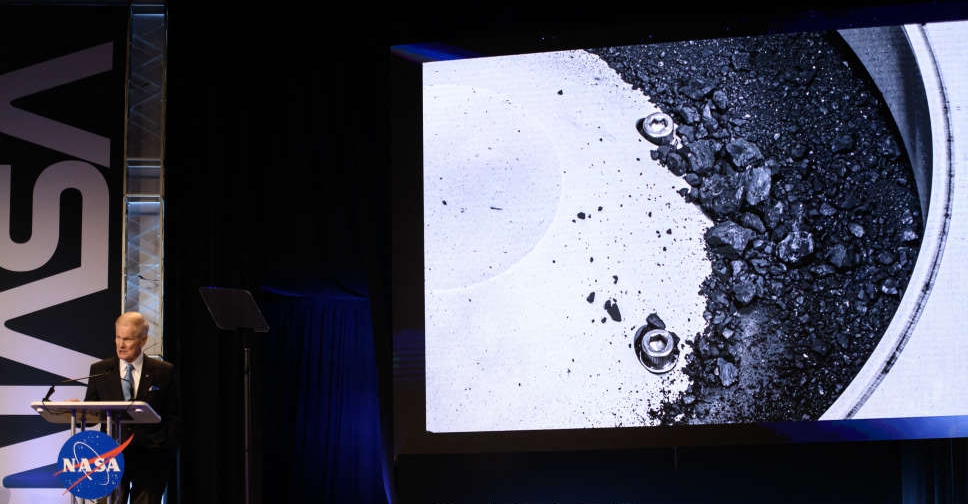
NASA gave the public a first glimpse of what scientists found inside a sealed capsule that was returned to Earth last month carrying a carbon-rich soil sample scooped from an asteroid's surface, including water-bearing clay minerals.
A small quantity of the material collected by the OSIRIS-REx spacecraft three years ago from the near-Earth asteroid Bennu was unveiled in an auditorium at NASA's Johnson Space Centre in Houston, a little more than two weeks after it was parachuted into the Utah desert.
The return capsule's landing capped a seven-year joint mission of the US space agency and the University of Arizona. It was only the third asteroid sample, and by far the biggest, returned to Earth for analysis, following two similar missions by Japan's space agency ending in 2010 and 2020.
"It's days like this that continue to amaze me," NASA chief Bill Nelson said from the stage as he introduced the first picture of material retrieved from Bennu, a celestial artifact about 4.5 billion years old, on a viewing screen.
The image showed a loose cluster of small charcoal-colored rocks, pebbles and dust found to have been left in the outer portion of the sample-collection assembly when the asteroid's soil was sucked through a filter into the spacecraft's storage canister.
Technicians are still methodically disassembling hardware surrounding the inner science canister containing the bulk of the specimen, a process expected to take two more weeks.
But the "bonus" sample of overflow material was immediately examined with electron microscopes and X-ray instruments, said Dante Lauretta, principal mission investigator at the University of Arizona.
What they found was material high in carbon, nearly 5 per cent by weight of an element essential to all life on Earth, as well as water molecules locked in the crystallized structure of clay fibers, Lauretta said.
Scientists also discovered iron minerals in the form of iron sulfides and iron oxides, "which themselves are indicative of formation in a water-rich environment," Lauretta told a later news briefing.
Daniel Glavin, a senior sample scientist at NASA's Goddard Space Flight Center, said early analysis found the material seems to be "loaded with organics".
The preliminary findings point to a likelihood of further discoveries that could buttress the hypothesis that early Earth was seeded with the primordial ingredients for life by celestial objects such as comets, asteroids and meteorites that bombarded the young planet.


 Trump adds seven countries to full travel ban list
Trump adds seven countries to full travel ban list
 Indian parliament votes to allow private firms in nuclear power sector
Indian parliament votes to allow private firms in nuclear power sector
 Doctors in England start five-day walkout during flu surge
Doctors in England start five-day walkout during flu surge
 Israeli settler kills 16-year-old Palestinian in West Bank, mayor says
Israeli settler kills 16-year-old Palestinian in West Bank, mayor says
 Paris' Louvre reopens partially but staff vote to extend strike
Paris' Louvre reopens partially but staff vote to extend strike




